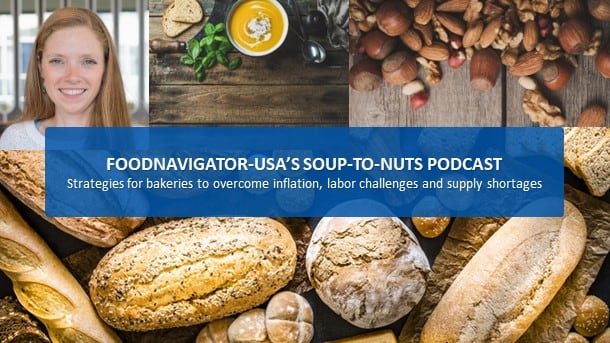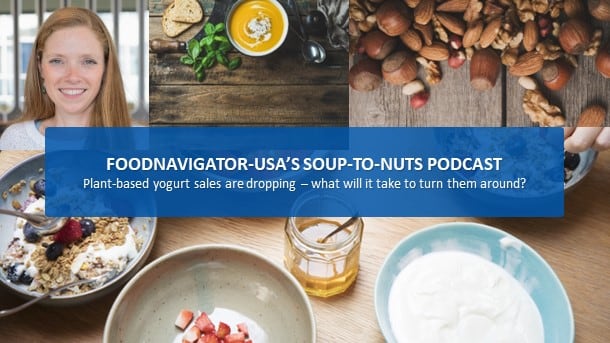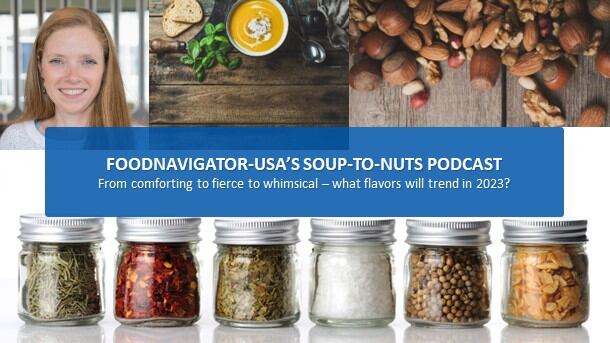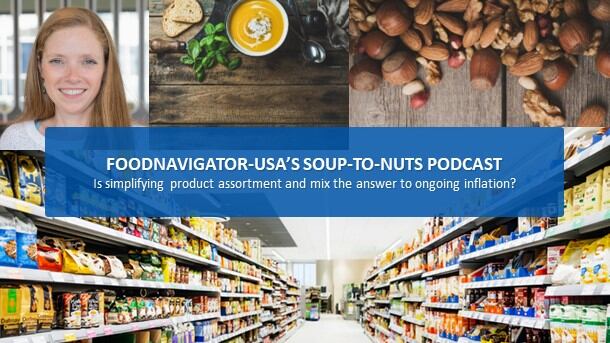This is especially true within bakery – a labor-intensive category which has suffered high-profile shortages throughout the pandemic and the ongoing war between Ukraine and Russia, including grains, yeast and other ingredients. These have contributed to high inflation that data from IRI crunched by 210analytics estimates exceeded 15% in October over the previous year, just above the 13.7% year-over-year increase in total food and beverage.
Despite these challenges, bakeries in grocery and specialty stores are thriving. According to the inaugural Power of In-Store Bakery 2022 report released last week by FMI – The Food Industry Association, dollar sales for the in-store bakery department are up 14.4% and units are up 7.4% in the past year. The most popular items, according to FMI, are muffins, cupcakes and cookies with dollar sales climbing 24.2%, 23.6% and 21.7% respectively. Whereas the biggest losers, according to 210Analytics includes pies, croissants and wraps or flatbreads, which saw units drop 24.9%, 248% and 11% respectively.
In this episode of FoodNavigator-USA’s Soup-To-Nut podcast, Dawn Foods senior director of insights & market research Sarah Hickey explains how the trifecta of inflation, product shortages and labor challenges are impacting the bakery industry both in foodservice and in store and how stakeholders are managing and overcoming each. She also shares shifts in how and what consumers shop for in bakery and how these are creating additional challenges and opportunities for bakeries in the new year.
[Editor’s note: Never miss an episode of FoodNavigator-USA’s Soup-To-Nuts podcast – subscribe today.]
A ‘new normal’
Like many things, the pandemic changed how Americans buy and consume baked goods – and as the threat of COVID subsides, many of those changes are proving to be permanent.
For example, Hickey notes during the pandemic that many people turned to the grocery stores – or online – for baked goods that they once bought at cafes, restaurants and specialty shops which is pushing grocers and bakers to rethink not only what they stock but how they market to consumers.
“I don’t love the word new normal, but this is kind of what we’re thinking about and where we are today,” because people who shifted to eating at home more and buying baked goods at the grocery store during the pandemic do not appear to be in a rush to move back to their previous behavior, Hickey said.
She also noted that many people continue to order baked goods online – which is reducing the amount of impulse purchases that came with smelling freshly baked bread and cakes in the store.
Labor-lean options gain importance
Another side effect of the pandemic that continues to linger is a shortage of workers, many of whom have not returned to the bakeries, restaurants and foodservice establishments where they worked before shutdowns due to the pandemic triggered massive layoffs.
According to Datassential, almost 57% of foodservice operators are looking for labor-saving solutions, which Hickey notes does not mean having to compromise quality.
She explains that Dawn Foods is working closely with bakery departments and specialty shops to use more mixes and quick-scratch solutions, like frozen products, that they can offer without sacrificing quality.
Bimbo Bakehouse also is working to alleviate pressure relate to labor shortages by offering pre-sliced and thaw & serve buns and rolls that can be used across day and meal parts – also reducing their upfront inventory investment. For example, its brioche buns can be used for breakfast sandwiches, burgers at lunch and dinner and ice cream sandwiches.
Limited time offerings can address supply shortages
Hickey adds that baked goods and mixes with multiple uses also help alleviate supply shortages by simplifying inventory orders and sourcing. She adds another strategy for managing supply shortages is to leverage limited time seasonal offerings, which consumers love and which lean on ingredients in abundance.
“We’re seeing supply chain issues start to level off. We’re getting to a better place. But I think there is a way in which we can manage through those challenges to help our customers embrace more seasonal offerings” that use ingredients that are available in abundance at the moment, she said.
Managing inflation with “daily delights”
The most suborn and unpredictable challenge facing bakery currently is inflation – which after more than a year growth to record levels not seen in decades, is finally starting to take a toll on shoppers who have burned through savings and are now starting to pull back on their spending.
One way that Hickey says bakery departments can help shoppers manage inflation and continue to generate sales is to offer products with a lower price point, but which might actually be higher margins.
She explained that consumers might not be able to afford a six-tiered cake, but they might by a dozen cupcakes at a lower price point or a single-serve slice of cake as a small indulgence for less than the price of a full cake.
A bonus for bakeries is that single-serve desserts and indulgences can often be sold at a higher margin, making this strategy win-win for stores and customers alike.
According to FMI, grocers and bakeries can encourage sales of more single-serve treats by promoting freshness, which is a big driver of impulse purchases. With this in mind, the trade group recommends clearly labelling when products were baked and promoting their freshness in stores.
Mindfulness matters
Consumers’ gravitation towards smaller daily delights also reflects a larger cultural shift to better support mental wellbeing and to be more mindful when selecting treats – like baked goods. Hickey says she sees this reinforcing other related trends, as well, such as a desire for clean label and more sustainable options.
She noted research by Dawn Foods that found 67% of consumers said products with clean ingredients but more calories were healthier than products with fewer calories but more processed ingredients.
In addition, research by Dawn Foods found 71% of global consumers are willing to pay a premium for sweet baked goods that are made more sustainably, and today’s consumers are more aware of how their dietary choices impact not only their personal health, but that of the community and the planet as well.
While consumer say they are willing to pay more for these products, inflation is challenging this notion, and stakeholders continue to grapple with higher prices of cleaner and healthier ingredients.
Multicultural flavors and new twists on nostalgic products drive sales
Other trends that Hickey says are shaping bakery which may be are less sensitive to inflation include rising demand for flavors and baked goods that are both familiar – or nostalgic – but also can deliver new experiences or cultures without the high cost of travel.
“We’ve been talking about global flavors for a long time, but I see it even deeper and further across the board,” with some flavors that were once niche going mainstream so they are available even in smalltown America, Hickey said.
For example she says she sees the most potential in the US for flavors from Mexico and South America as well as from Asia and Eastern Europe. To a lesser but growing extent, consumers are increasingly interested in baked goods and flavors from Africa.
Specialty vs grocery matters
While in-store bakeries may need to expand or adjust their offerings to meet some of these demands for more indulgent items and flavors from around the world, FMI underscores the importance of also providing the basics. In its report it notes that most shoppers buy functional items, like bread, buns and bagels at grocery store bakeries, but prefer to buy indulgent items from specialty stores.
For more insights on bakery trends and what consumers want from where, check out FMI’s Power of In-Store Bakery 2022 report at fmi.org.




